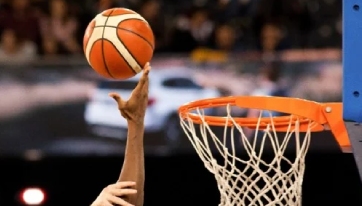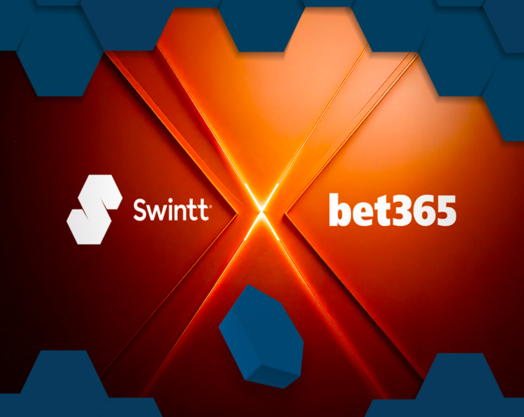- Casino News
- USA News
Key Sportsbooks Impact During 2025’s March Madness


Sportsbook Performance Breakdown
As March Madness continues to captivate basketball fans with its fast-paced action and unexpected upsets, sportsbooks face a distinct set of challenges. With games often defined by rapid momentum shifts and nail-biting finishes, the ability to maintain a reliable betting platform becomes paramount. A new analysis by Bettormetrics, which tracked key performance metrics during the NCAA basketball tournament, highlights the operational strengths and weaknesses of major betting platforms, particularly focusing on uptime, pricing strategies, and in-game availability.
| Sportsbook | Uptime | Green Time | Off-Market Time | Pricing Strategy (Overround) |
|---|---|---|---|---|
| BetMGM | 90.1% | 79.7% | 10.4% | ~5% (Competitive) |
| Hard Rock | 88.3% | 86.2% | 2.1% | 7% (Higher Margin) |
| DraftKings | 80.9% | 80.9% | 3.8% | ~5% (Competitive) |
| Bet365 | Unstable | 59.4% | 19.7% | Low Overround (Sharp Pricing) |
| ESPN Bet | 74% | 71.4% | 2.6% | Moderate |
| Caesars | 74.6% | Low | Moderate | Higher Overround |
BetMGM Tops Uptime Rankings
Among the leading sportsbooks, BetMGM emerged as the frontrunner in uptime, achieving a solid 90.1% reliability throughout the high-stakes March Madness games. This figure suggests that BetMGM’s platform remained stable and operational during the most volatile moments of the tournament. Hard Rock, a close competitor, posted a strong 88.3% uptime, while BetRivers trailed at 86.8%, rounding out the top three in uptime performance.
These operators demonstrated resilience in maintaining service availability even when the action on the court reached its most unpredictable. However, while uptime is a critical metric, the analysis also revealed that BetMGM’s pricing strategy may have hindered its overall performance.
Despite its top-tier uptime, BetMGM experienced notable challenges in its pricing strategy, particularly through frequent price changes. Bettormetrics estimated that BetMGM may have rejected up to 9% of betting activity due to these adjustments, leading to what is known as “off-market time”—a period when betting lines are removed or altered. BetMGM spent 10.4% of the total fixture duration in these off-market positions, suggesting that while its platform remained operational, its pricing approach could have alienated bettors seeking stability during intense moments of gameplay.
In contrast, other sportsbooks, such as ESPN Bet (74%) and Caesars (74.6%), struggled with uptime reliability, leading to inconsistent availability. This failure to maintain a steady platform, particularly during the tournament's most chaotic stretches, could undermine bettor trust and loyalty, potentially costing sportsbooks valuable engagement during critical betting windows.
Green Time and In-Play Availability
Another key metric in Bettormetrics' analysis was “green time,” which tracks the duration that sportsbooks are both online and accepting bets. Hard Rock led in this category, with an impressive 86.2% green time, closely followed by DraftKings (80.9%) and BetMGM (79.7%). These operators excelled in ensuring that bettors had access to active betting markets during key in-game moments, which is crucial in a high-stakes, fast-moving tournament like March Madness.
Hard Rock’s combination of strong green time and uptime, along with its low off-market time, positions it as a standout operator in terms of profitability. However, the company’s strategy also involved a higher overround (7%), meaning it maintained slightly higher margins, potentially rejecting business in favor of higher profitability. This pricing approach reflects a balance between risk management and revenue optimization, though it could deter bettors seeking better value.
Fanatics and ESPN Bet, on the other hand, struggled with green time, posting scores of 72.5% and 71.4%, respectively. This lower availability, combined with inconsistent uptime, hindered their overall performance. Bet365’s performance in this category was especially concerning, with only 59.4% green time, which is particularly problematic given the fast-paced nature of college basketball betting.
Measuring Impact
Off-market time serves as a reflection of how risk-averse an operator is. Sportsbooks with low off-market times are likely maintaining more stable betting lines and a consistent market presence. Hard Rock (2.1%), ESPN Bet (2.6%), and DraftKings (3.8%) all kept their off-market times relatively low, signaling tight risk controls and a more stable betting environment for users.
Conversely, Bet365 stood out with a staggering 19.7% off-market time. This figure suggests that Bet365 frequently removed betting lines during uncertain periods, likely to mitigate risk during intense moments. While Bet365’s competitive pricing strategy, characterized by a low overround, may appeal to sharp bettors, its high off-market time suggests a trade-off between attractive odds and consistent market availability.
The analysis also examined the pricing strategies of various sportsbooks, focusing on their overrounds—the margin built into the odds to ensure profitability. DraftKings, BetMGM, Caesars, and Bet365 all posted relatively low overrounds, near or below 5.4%, suggesting a strategy focused on competitive pricing to capture market share.
On the other hand, operators like BetRivers and Hard Rock adopted higher overrounds of 7.5% and 7%, respectively. This indicates a focus on profitability, possibly at the expense of attracting more users. DraftKings, however, stood out by maintaining a low overround while also achieving top-tier uptime and low off-market time, indicating a well-balanced approach to both availability and competitive pricing.
Fanatics, with an overround of 5.8%, demonstrated a strategy that kept its pricing relatively competitive. It also exhibited the smallest gap between uptime and acceptance uptime, implying that the company kept its odds stable while also working to limit off-market periods to around 5%.
Risk Management: Who Got it Right?
In terms of risk management, Hard Rock proved to be the standout operator. With a balanced approach to uptime, green time, and off-market periods, Hard Rock emerged as a leader in minimizing risk while maintaining solid availability. BetMGM, despite its high uptime, could improve its risk strategy, particularly with regard to its frequent price changes and higher off-market time. DraftKings delivered a strong performance across the board, combining low off-market time with top-notch availability, making it a well-rounded player in the market.
At the lower end of the spectrum, Bet365’s high off-market time and low green time undermined its otherwise competitive pricing. Similarly, Caesars and ESPN Bet struggled with both uptime and in-game acceptance, which could dampen their performance and make them less appealing to bettors seeking reliability.
Operators that can balance risk management with consistent availability are well-positioned to succeed in the fast-paced, high-stakes environment of March Madness.
Conclusion
As March Madness concludes, the importance of platform stability and responsive pricing cannot be overstated. Sportsbooks that can balance risk management with consistent availability are well-positioned to succeed in this fast-paced, high-stakes environment. BetMGM’s leadership in uptime was commendable, but its frequent price changes highlighted the importance of maintaining both a stable platform and reliable odds. Operators like Hard Rock and DraftKings, with their balanced approaches to uptime, green time, and low off-market periods, emerged as key players in the tournament. For sportsbooks, the challenge will continue to lie in adapting to the unpredictable nature of college basketball while providing bettors with the stability and trust they need to thrive.
The Hottest USA Casinos 2025












